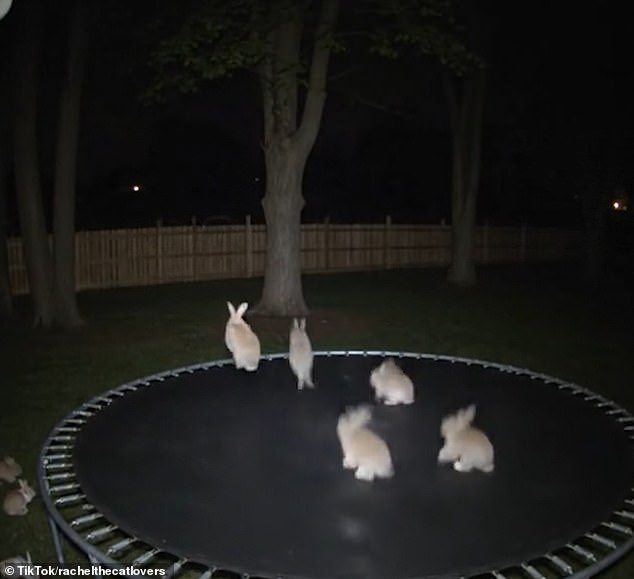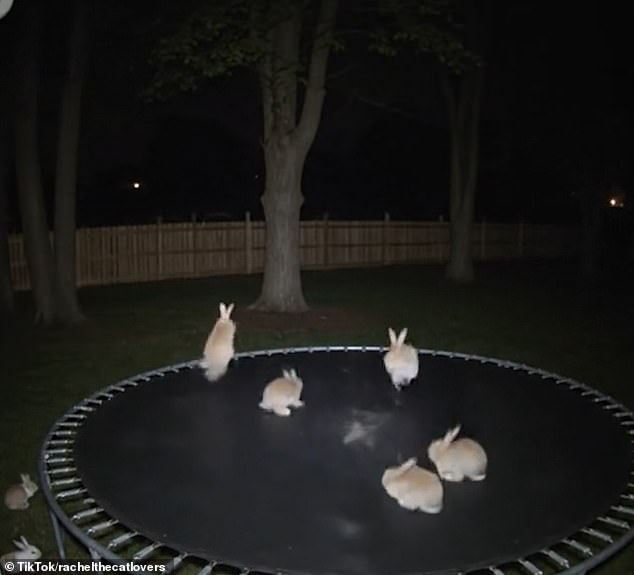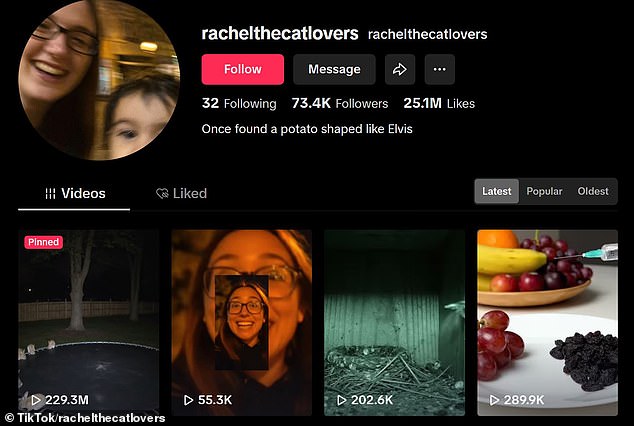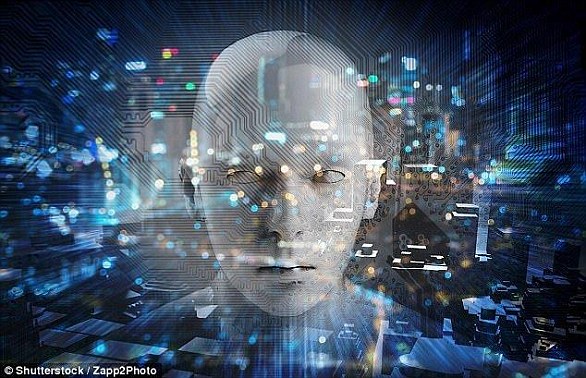By WILIAM HUNTER, SCIENCE & TECHNOLOGY REPORTER
Published: | Updated:
Young, tech-savvy social media users might like to think they could never be deceived by a fake video.
But a viral clip showing cute rabbits bouncing on a trampoline has now proven that nobody is above falling for online trickery.
The video, posted by TikTok user rachelthecatlovers, has amassed 229.3 million views and over 88,000 comments.
However, despite how adorable it might be, the clip is nothing more than an AI-generated hoax.
In the video’s description, rachelthecatlovers wrote: ‘Just checked the home security cam and… I think we’ve got guest performers out back!’
If you fell for this fake video, then the good news is that you weren’t alone, as social media users have flocked to share their surprise at being caught out.
On TikTok, one user complained: ‘This is the first AI that has ever got me.’
But if you’re still having trouble separating fact from fiction, these are the subtle clues that give away the deception.


First, as the video starts, pay close attention to two bunnies on the left-hand side of the trampoline.
What initially looks like two grey rabbits sitting side-by-side, unnaturally warps into a single bunny, which bounds away.
A similar transformation occurs with two other rabbits around the five-second mark.
To spot the subtle flaw, focus on the leftmost rabbit as it starts to run across the trampoline.
The rabbit jumps up and obscures another rabbit sitting on the back edge, which has vanished by the time the first rabbit lands.
Finally, keep your eye on the single dark grey rabbit in the middle-right of the screen.
Around seven seconds into the video, the rabbit unexpectedly gives up its grey colouration and becomes brownish-white like the others.
Although these hints might be difficult to spot at first, once you’ve seen them, it is clear that this video is a fake.

For more evidence that this viral clip is a fraud, you can also look at the other videos posted by the account rachelthecatlovers.
In one AI-generated video, a hand is shown injecting raisins with water to transform them back into grapes.
Another video shows what appears to be a rabbit entering through a kitchen dog door.
However, on closer inspection, the video is clearly AI-generated, as you can see the dog flap fading out of existence.
Addressing the claim that the videos are fake, the account posted a bizarre video in which a woman, lit by flashing orange lights, shouts into the camera over loud music.
In the clip, the woman repeatedly says: ‘Guys, the rabbits are real. D A A R E. Real.’
Despite the subtle hints and the account’s unusual behaviour, many people still found themselves falling for the clip.
One commenter happily wrote: ‘MY BUNNY DOES THE SAME THING.’



‘OMG this is the best thing I’ve ever seen,’ added another.
Even Gen Z found themselves unable to spot the fake, as one commenter wrote: ‘A few years ago I was laughing at my mother for believing ai.
Another joked: ‘I’m getting scammed when im older.’
This is not the first time that an AI-generated image has gone viral before the internet realised that there was deception involved.
In 2023, Eliot Higgins, founder of open-source investigative journalism website Bellingcat, created a series of AI-generated pictures showing Donald Trump being arrested outside Trump Tower.
Although Mr Higgins said that he had made the pictures with AI in his initial post, the images were shared and spread without that context.
As the images went viral, many people were convinced that Trump had, in fact, been arrested.
Likewise, AI-generated images of the late Pope Francis wearing a puffer jacket were detailed enough to convince thousands of people that the photos were real.
HOW ARTIFICIAL INTELLIGENCES LEARN USING NEURAL NETWORKS
AI systems rely on artificial neural networks (ANNs), which try to simulate the way the brain works in order to learn.
ANNs can be trained to recognise patterns in information – including speech, text data, or visual images – and are the basis for a large number of the developments in AI over recent years.
Conventional AI uses input to ‘teach’ an algorithm about a particular subject by feeding it massive amounts of information.

Practical applications include Google’s language translation services, Facebook’s facial recognition software and Snapchat’s image altering live filters.
The process of inputting this data can be extremely time consuming, and is limited to one type of knowledge.
A new breed of ANNs called Adversarial Neural Networks pits the wits of two AI bots against each other, which allows them to learn from each other.
This approach is designed to speed up the process of learning, as well as refining the output created by AI systems.








